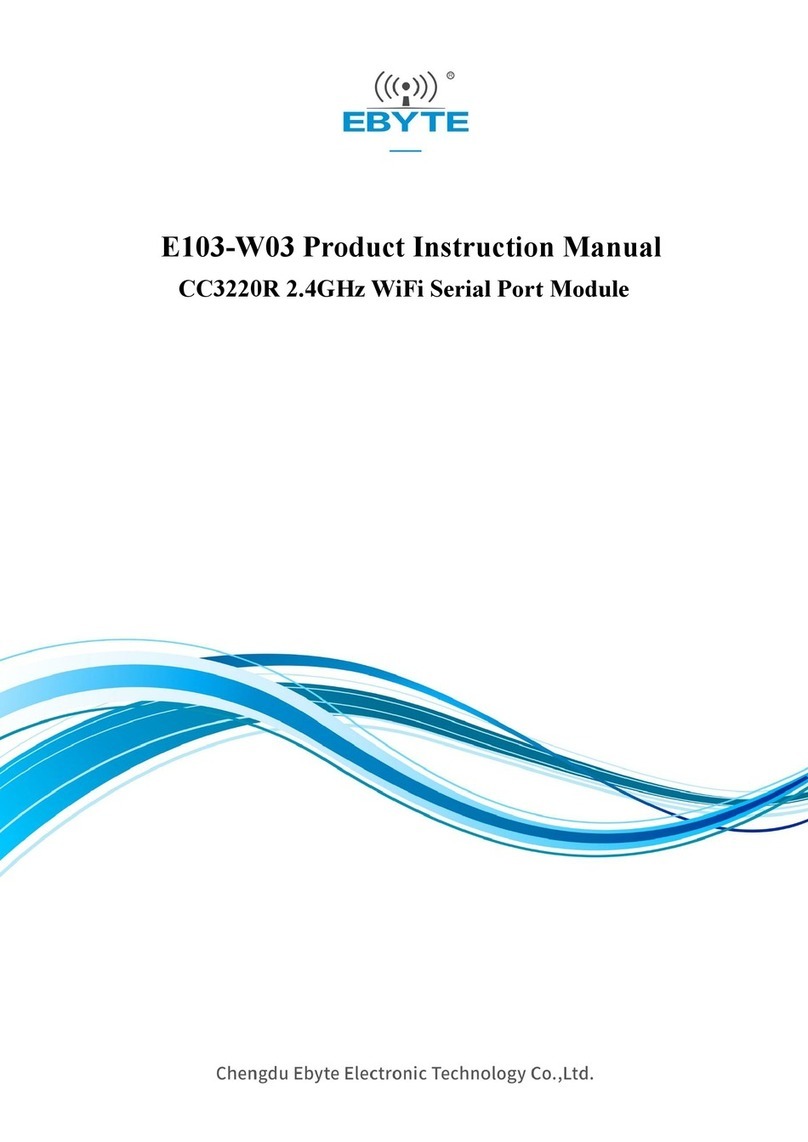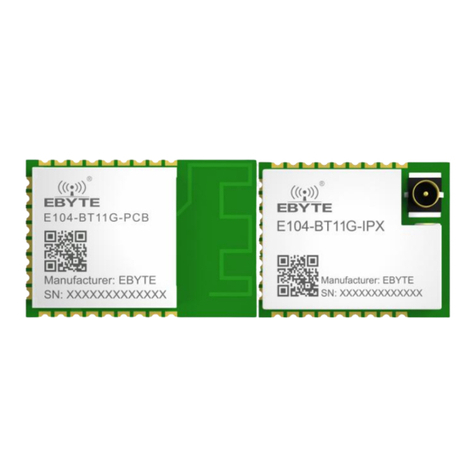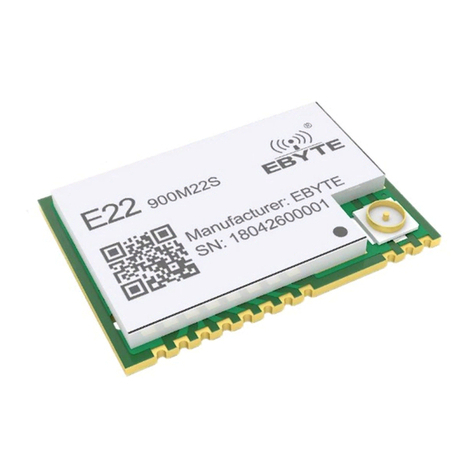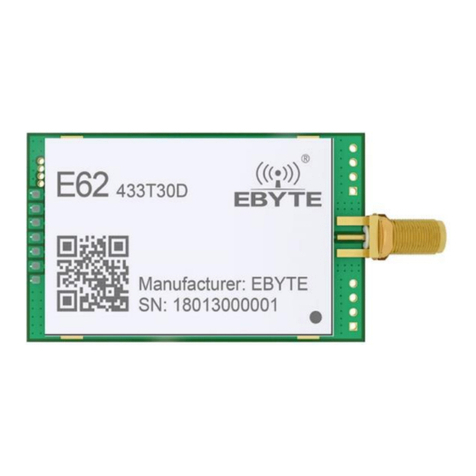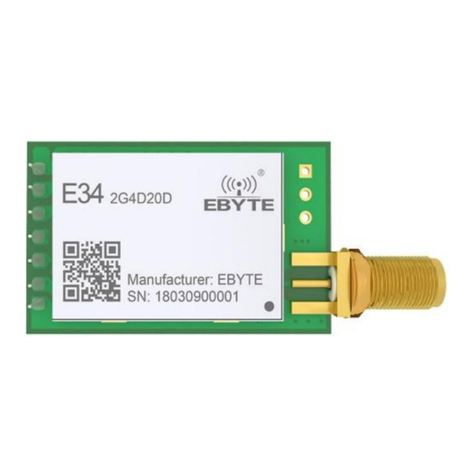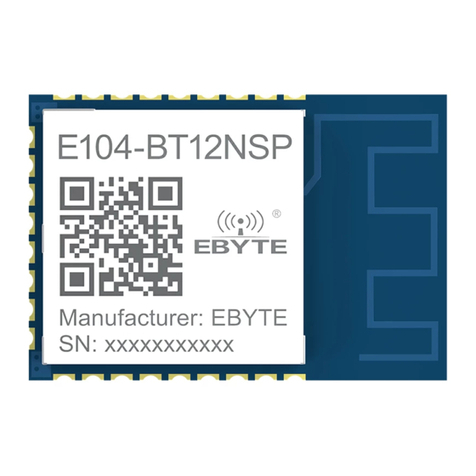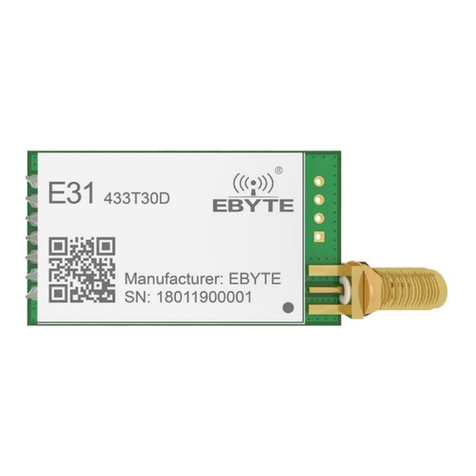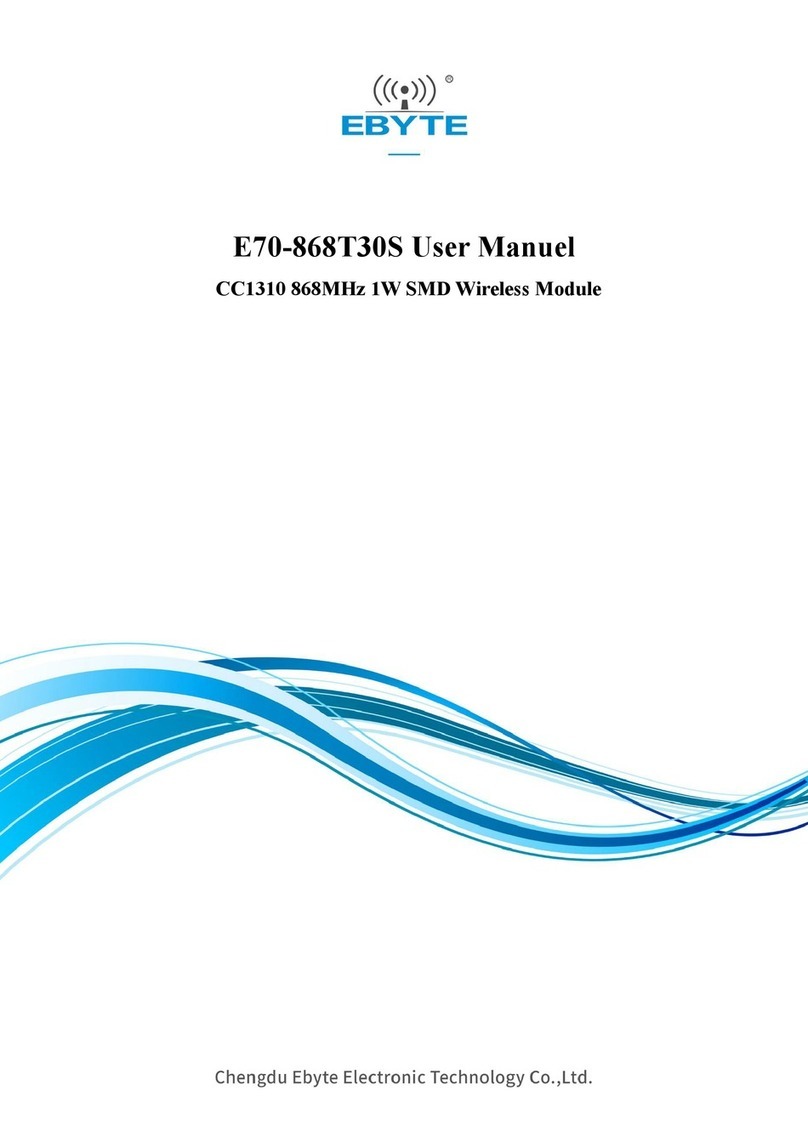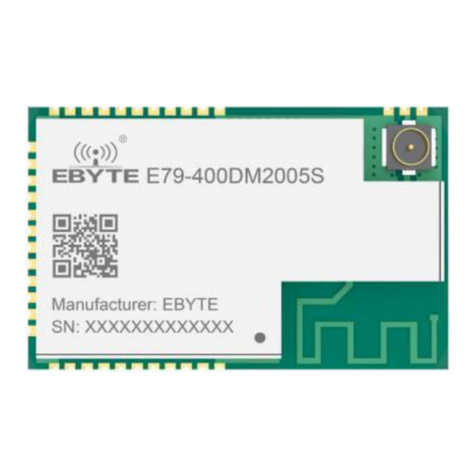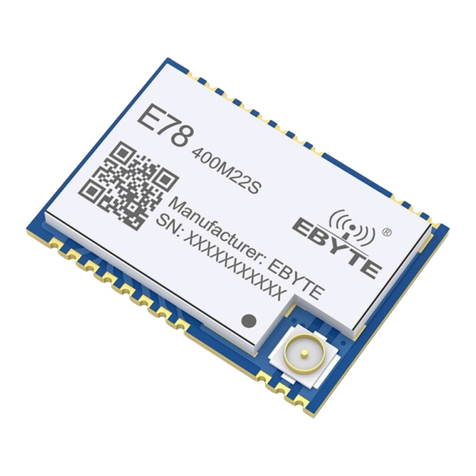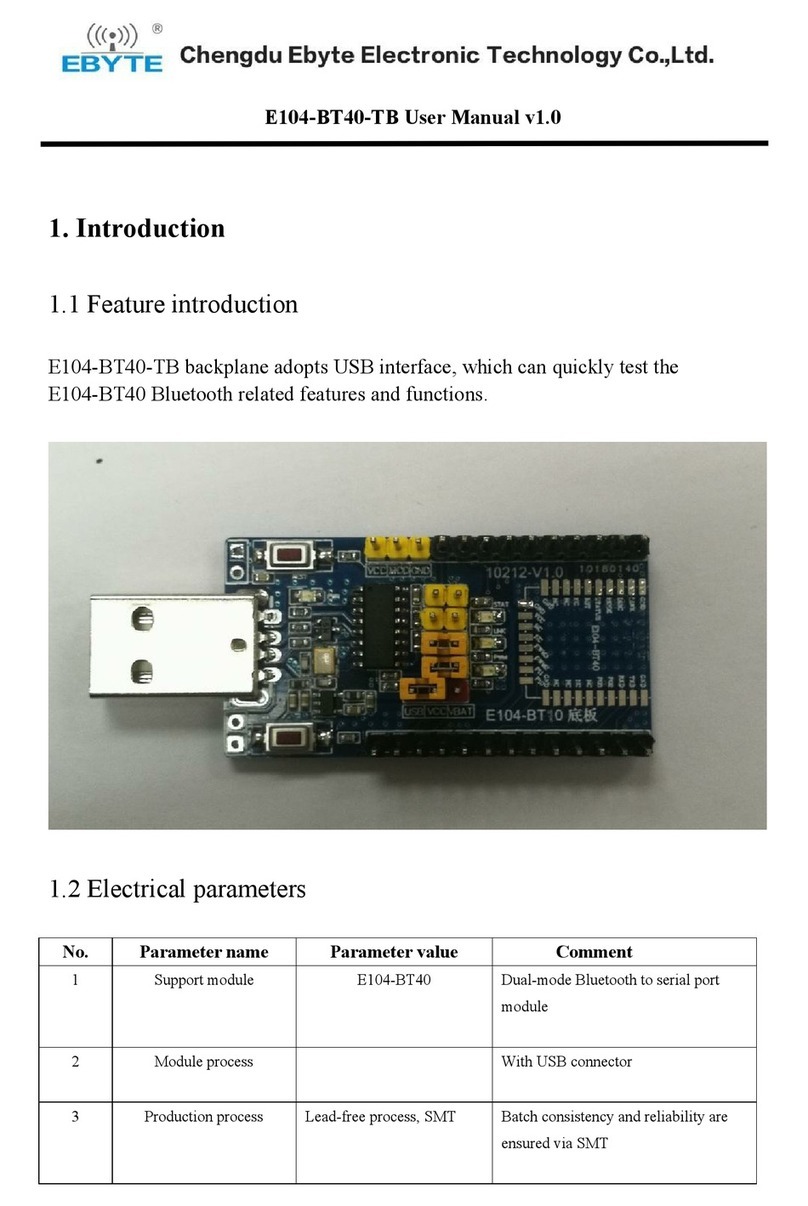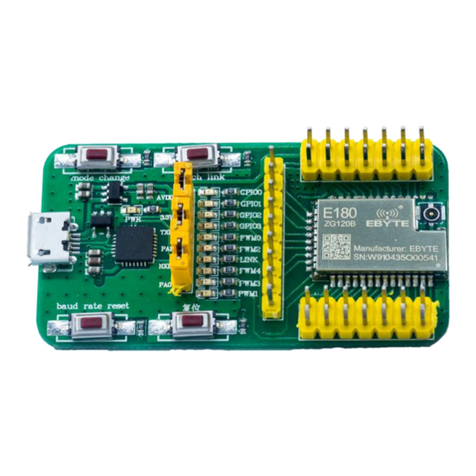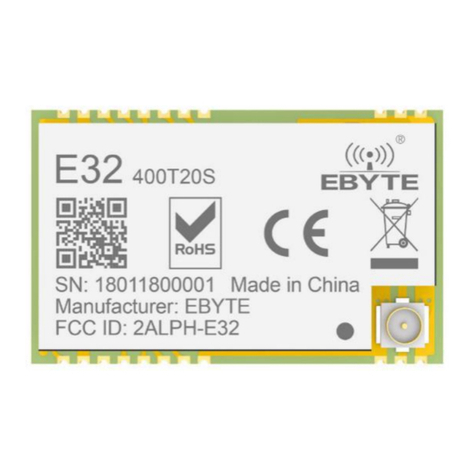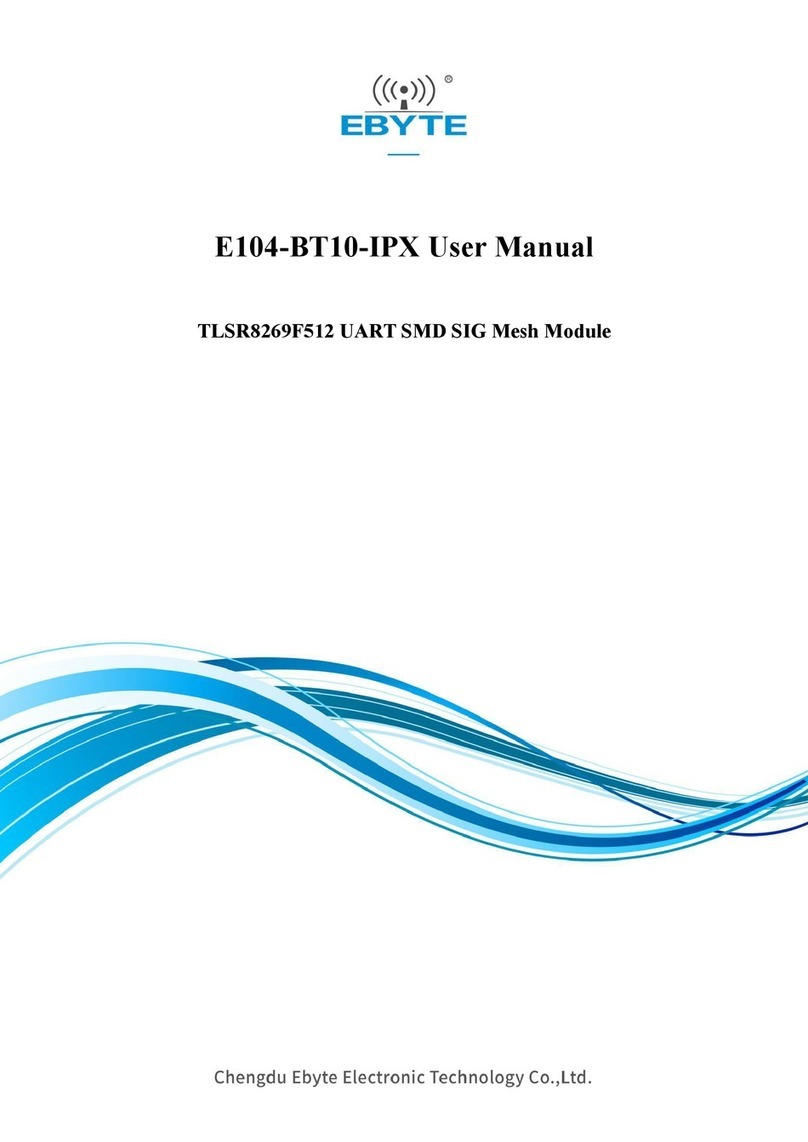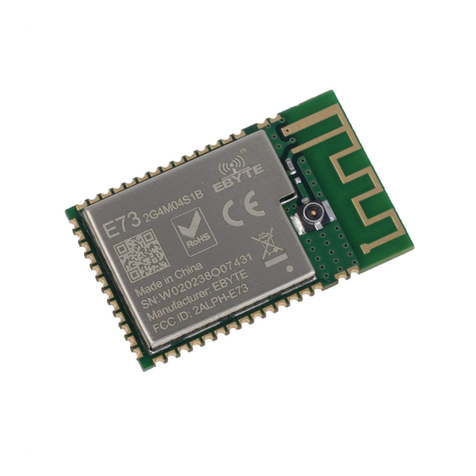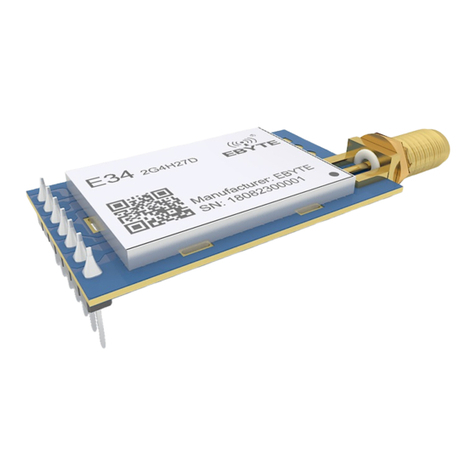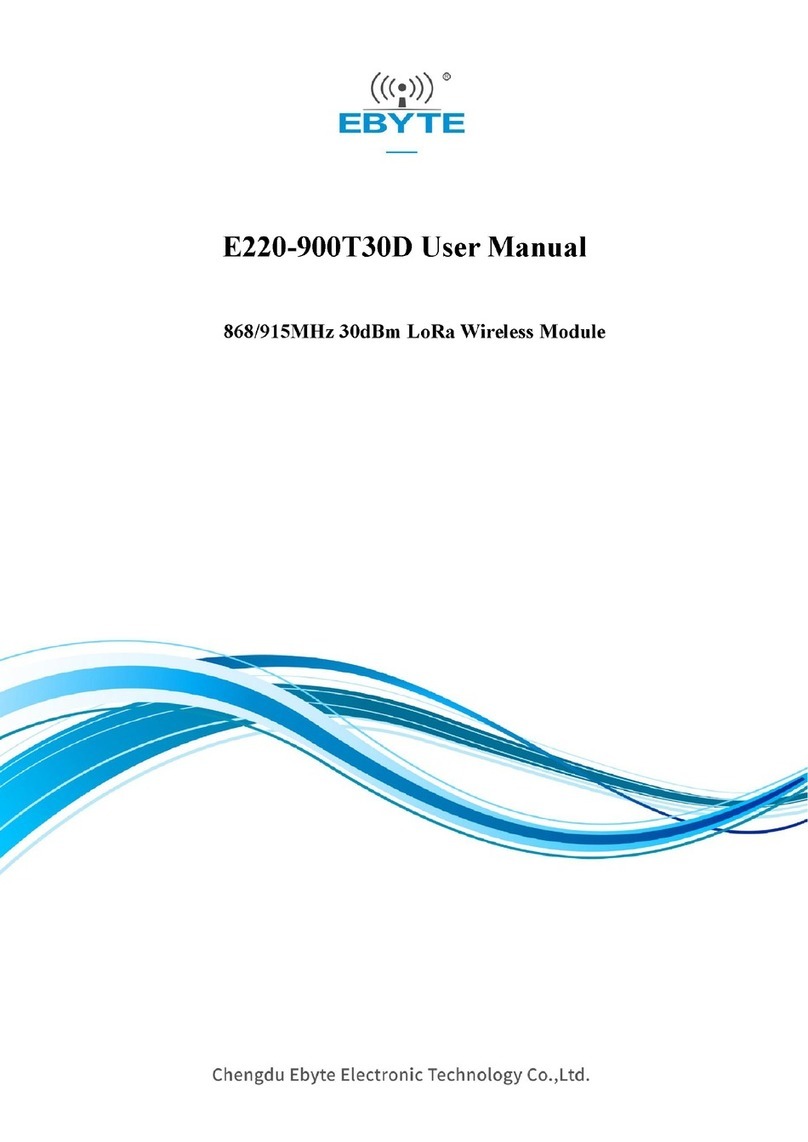
Chengdu Ebyte Electronic Technology Co.,Ltd E01-2G4M01S1B User Manual
Copyright ©2012–2018, Chengdu Ebyte Electronic Technology Co.,Ltd 1
CONTENTS
1. Overview........................................................................................................................................................................2
1.1 Introduction.............................................................................................................................................................. 2
1.2 Features.................................................................................................................................................................... 2
1.3 Application............................................................................................................................................................... 3
2 Technical Parameters...........................................................................................................................................................3
2.1 Limit Parameter........................................................................................................................................................3
2.2 Working parameters..................................................................................................................................................3
3 Dimension and pin definition.............................................................................................................................................. 4
4 Basic operation.................................................................................................................................................................... 5
4.1Hardware design........................................................................................................................................................5
4.2 Software programming.............................................................................................................................................6
5 Basic application................................................................................................................................................................. 7
5.1 Basic circuit diagram................................................................................................................................................7
6 FAQ..................................................................................................................................................................................... 7
6.1 Communication range is too short........................................................................................................................... 7
6.2 Module is easy to damage........................................................................................................................................ 7
6.3 BER(Bit Error Rate) is high..................................................................................................................................... 8
7 Soldering guidance..............................................................................................................................................................8
7.1 Reflow Soldering Temperature................................................................................................................................ 8
7.2 Reflow Soldering Curve...........................................................................................................................................9
8 Batch packaging.................................................................................................................................................................. 9
8.1 Tray...........................................................................................................................................................................9
